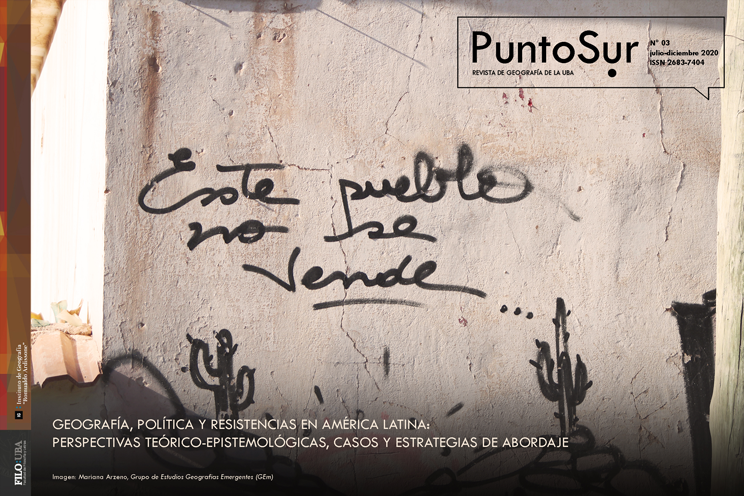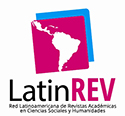Mapeando el (des)orden espacial: cartografía social en Cabure-í, Misiones "
Palabras clave:
cartografía social, cartografía, orden espacial, catastro, tenencia de la tierra
Resumen
Nuestro objetivo central en este artículo es reflexionar sobre los aportes que puede realizar la cartografía social para identificar la espacialidad, o los aspectos específicamente espaciales, de los procesos sociales. Para ello, analizamos un mapeo realizado en Cabure-í, Misiones, junto con una cooperativa de pequeños productores. Este mapeo apuntaba a poner de relieve, para quienes integran la cooperativa, la dimensión espacial de la situación actual respecto a la tenencia de la tierra, lo cual contribuiría a re-enmarcar la precariedad en dicha tenencia no ya como un problema de familias particulares, sino como una problemática de escala colectiva. Pero, además, para nuestro grupo de investigación, esta actividad de cartografía social nos llevó a cuestionar nuestros propios supuestos en torno al orden espacial configurado por las y los integrantes de la cooperativa. Mientras que suponíamos que las divisiones catastrales oficiales sólo tendrían relevancia para la cotidianeidad de la población dado que legitiman órdenes de desalojo en su contra –casi ninguna familia es propietaria de la tierra–, hallamos que el mapa catastral, además, ha sido reapropiado por la población para la propia delimitación de sus chacras.Descargas
Publicado
2020-11-30
Cómo citar
Fernández Romero, F., Muñecas, L., Zanotti, A. S., & Piccinali, L. (2020). Mapeando el (des)orden espacial: cartografía social en Cabure-í, Misiones ". Punto Sur, (3), 9-27. https://doi.org/10.34096/ps.n3.9696
Sección
Dossier






















